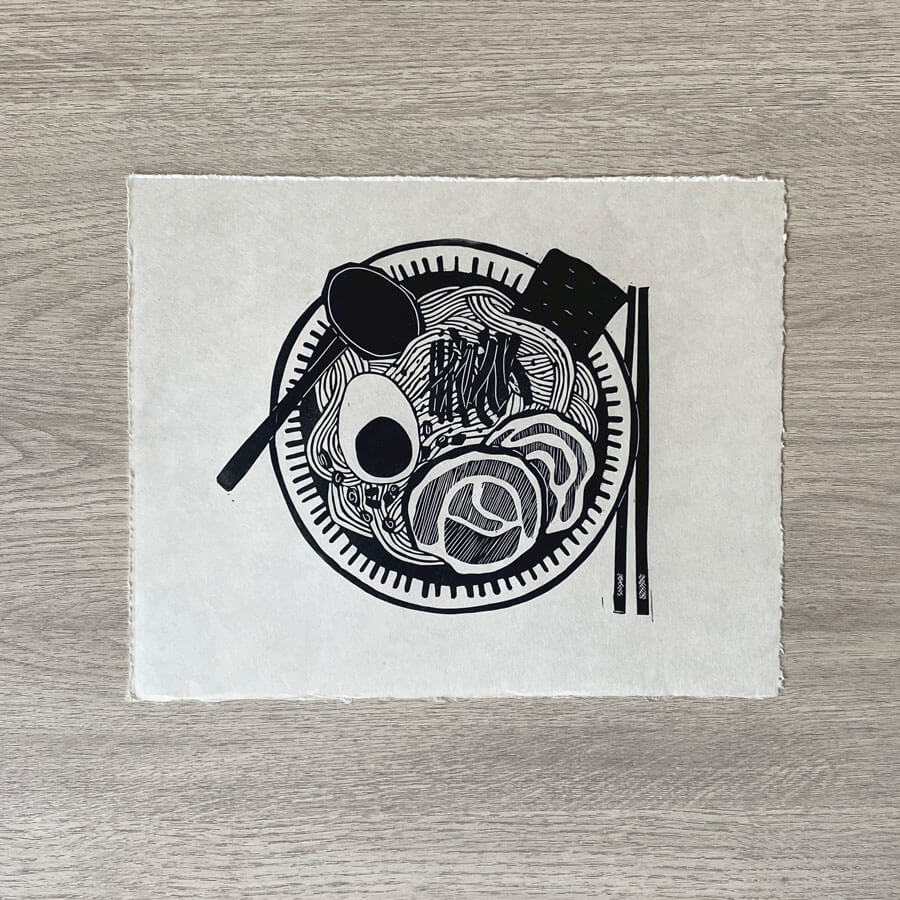In the realm of printmaking, two prominent techniques stand out for their unique characteristics and artistic possibilities: relief print and intaglio print. While both methods involve transferring ink onto paper, they differ significantly in terms of process, visual outcomes, and artistic expression. In this article, we will delve into the depths of relief print and intaglio print, exploring their differences and shedding light on their individual merits.
- Relief Print:
Relief print, also known as block printing, is a technique where the image is carved or etched onto a block or plate, leaving the raised areas to be inked and printed. This method traces its origins back to ancient times and has evolved into various forms, such as woodcut and linocut. Relief prints are characterized by bold, graphic lines and a distinct textural quality. The process involves carving away the negative space, leaving the image to be printed in relief. Artists can use different tools and materials to achieve varying effects, resulting in a wide range of styles and visual aesthetics. - Intaglio Print:
In contrast to relief print, intaglio print involves incising or etching the image into a plate, creating recessed areas that hold the ink. Common intaglio techniques include engraving, etching, and aquatint. The plate is inked, and the excess ink is wiped away, leaving ink only in the incised lines or grooves. When printed, the pressure of the press forces the paper into the recessed areas, resulting in a characteristic embossed effect. Intaglio prints are known for their fine details, tonal variations, and rich textures, making them a favorite among artists seeking intricate and nuanced visual expressions. - Key Differences:
- Technique: Relief print involves carving the image in relief, while intaglio print involves incising the image into the plate.
- Ink Application: In relief print, ink is applied to the raised surface, while in intaglio print, ink is applied to the recessed areas.
- Visual Effects: Relief prints often exhibit bold, graphic lines and a textured appearance, while intaglio prints showcase fine details, tonal variations, and embossed textures.
- Printing Process: Relief prints are typically made by applying pressure directly onto the block or plate, while intaglio prints require a press to transfer the ink onto the paper.
- Artistic Considerations:
The choice between relief print and intaglio print depends on the artist's desired visual outcome and artistic intent. Relief print lends itself well to bold, graphic compositions and is often favored for its expressive and immediate qualities. On the other hand, intaglio print allows for intricate details, tonal gradations, and a more subtle approach to image-making. Artists often experiment with both techniques, combining them with other printmaking methods to push the boundaries of their creative expression.
Conclusion:
Relief print and intaglio print are two distinct techniques within the realm of printmaking, each offering unique artistic possibilities. While relief print emphasizes bold lines and textures, intaglio print focuses on fine details and tonal variations. By understanding the differences between these techniques, artists can make informed choices that align with their creative vision. Whether it's the boldness of relief print or the intricacy of intaglio print, both methods contribute to the rich tapestry of printmaking, inspiring artists to explore new depths of artistic expression.
About Author
You may also like
-
Top Benefits of Using Perfume Tube Packages for Modern Cosmetic Brands
-
Why Carbon Fiber Powder Is Revolutionizing Modern Manufacturing
-
Custom Food Stickers: The Ultimate Branding Tool for Modern Food Businesses
-
TPO Floor Mats: Eco-Friendly, Durable, and Odor-Free Solutions
-
Sustainable Food Packaging: Why Tinplate is the Ideal Choice

